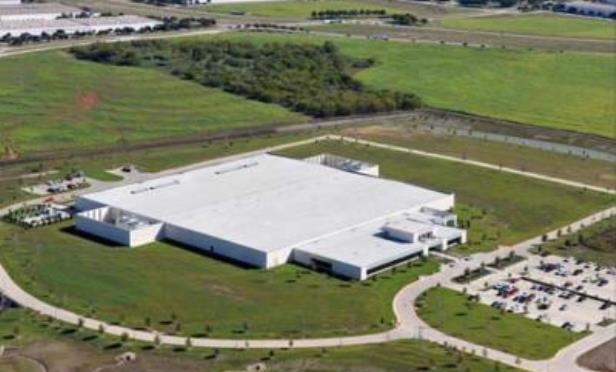
DALLAS—The public's obsession with online binge-watching is just one of the factors helping the data center industry flourish worldwide. Massive movement of data from private corporate servers to cloud-based solutions and a growing corporate thirst for Internet of Things initiatives are pushing corporate demand too, says JLL's new Data Center Outlook.
With data consumption skyrocketing, some major cloud providers are anticipating the need to triple infrastructure by 2020. JLL's report also notes that while data center demand is strong, industry growth could be tempered by external risks such as foreign currency exchange fluctuations, rising interest rates, M&A disruptions and policy shifts.
“The data centers market is very fluid, but a few things are certain. Cloud adoption is soaring, technology innovation will not slow down, data center portfolios are consolidating and rack densities are ascending rapidly,” said Bo Bond, managing director and data center solutions co-lead, JLL. “Companies needed to start their strategic planning yesterday to have any prospect of staying ahead.”
Promising new technologies from the big three cloud providers, coupled with the expansion of the Internet, are nudging more business leaders to the cloud. JLL anticipates swifter movement to the cloud so the industry's hub markets, from Silicon Valley and Northern Virginia to London and Tokyo, will force cloud service providers into expansion mode.
In 2017, data center lease negotiations will be more complex. Data center footprints are being reconfigured across the map, with each lease representing an opportunity for data center users to capitalize on hybrid cloud technology, as well as restructuring/right-sizing colocation footprints. Meanwhile, demand for space at the “edge” of the network, in lower tier, yet still highly populated markets, will still remain active, offering access to consumers outside the traditional core markets.
“Dallas is one of the top markets in the country and had limited supply in 2016. Data center developers are bringing product into the area, leading to leasing. This supply can create demand,” Bond tells GlobeSt.com. “In addition, there is a correlation between the headquarter moves we've seen and data center requirements. The initial need for space in Northern Virginia, Northern California and Chicago has been satisfied with established footprints there and cloud providers are now grabbing space in DFW.”
However, the new presidential administration creates some uncertainty for the industry's future. Anticipated energy cost reductions and regulatory oversight could potentially help alleviate the costs of delivering more capacity. Data center leaders are also investigating the potential impact of new federal mandates for data center optimization, including energy metering and power usage effectiveness requirements that must be met by the end of 2018. Cost-saving and efficiency measures can be meaningful for the industry, which consumed roughly 70 billion kilowatt-hours of electricity in 2014 alone.
Meanwhile, stricter data sovereignty laws are creating complexities for the industry globally. For example, mandates for Canadian companies to store data on Canadian soil could drastically change the level of data moved to the Canadian cloud. Additionally, European data centers continue to grapple with the still-unknown impact of Brexit, which will not be fully realized until London's data center industry is formally removed from the European Union in 2019.
M&A deals surged in 2016, a trend that is on pace to continue through 2017. As well-known providers set bidding sights on colocation companies, the race is beginning to fall to a few key players, such as Equinix and Digital Realty.
Industry leaders will be far better positioned for future success than new or emerging players. As interest in hyperscale sites goes up alongside the need for faster, better technology, users are becoming less likely to trust newcomers to the providers' scene.
“User demand for smart data center solutions will only continue to heat up, with operators feeling the pressure to deliver more data, faster and more flexibly than ever,” said Jon Meisel, managing director and data center solutions market director, JLL. “Smart maneuvering will be necessary for users and operators alike to flourish in the coming months.”
Read more about just how big is big data?

DALLAS—The public's obsession with online binge-watching is just one of the factors helping the data center industry flourish worldwide. Massive movement of data from private corporate servers to cloud-based solutions and a growing corporate thirst for Internet of Things initiatives are pushing corporate demand too, says JLL's new Data Center Outlook.
With data consumption skyrocketing, some major cloud providers are anticipating the need to triple infrastructure by 2020. JLL's report also notes that while data center demand is strong, industry growth could be tempered by external risks such as foreign currency exchange fluctuations, rising interest rates, M&A disruptions and policy shifts.
“The data centers market is very fluid, but a few things are certain. Cloud adoption is soaring, technology innovation will not slow down, data center portfolios are consolidating and rack densities are ascending rapidly,” said Bo Bond, managing director and data center solutions co-lead, JLL. “Companies needed to start their strategic planning yesterday to have any prospect of staying ahead.”
Promising new technologies from the big three cloud providers, coupled with the expansion of the Internet, are nudging more business leaders to the cloud. JLL anticipates swifter movement to the cloud so the industry's hub markets, from Silicon Valley and Northern
In 2017, data center lease negotiations will be more complex. Data center footprints are being reconfigured across the map, with each lease representing an opportunity for data center users to capitalize on hybrid cloud technology, as well as restructuring/right-sizing colocation footprints. Meanwhile, demand for space at the “edge” of the network, in lower tier, yet still highly populated markets, will still remain active, offering access to consumers outside the traditional core markets.
“Dallas is one of the top markets in the country and had limited supply in 2016. Data center developers are bringing product into the area, leading to leasing. This supply can create demand,” Bond tells GlobeSt.com. “In addition, there is a correlation between the headquarter moves we've seen and data center requirements. The initial need for space in Northern
However, the new presidential administration creates some uncertainty for the industry's future. Anticipated energy cost reductions and regulatory oversight could potentially help alleviate the costs of delivering more capacity. Data center leaders are also investigating the potential impact of new federal mandates for data center optimization, including energy metering and power usage effectiveness requirements that must be met by the end of 2018. Cost-saving and efficiency measures can be meaningful for the industry, which consumed roughly 70 billion kilowatt-hours of electricity in 2014 alone.
Meanwhile, stricter data sovereignty laws are creating complexities for the industry globally. For example, mandates for Canadian companies to store data on Canadian soil could drastically change the level of data moved to the Canadian cloud. Additionally, European data centers continue to grapple with the still-unknown impact of Brexit, which will not be fully realized until London's data center industry is formally removed from the European Union in 2019.
M&A deals surged in 2016, a trend that is on pace to continue through 2017. As well-known providers set bidding sights on colocation companies, the race is beginning to fall to a few key players, such as Equinix and Digital Realty.
Industry leaders will be far better positioned for future success than new or emerging players. As interest in hyperscale sites goes up alongside the need for faster, better technology, users are becoming less likely to trust newcomers to the providers' scene.
“User demand for smart data center solutions will only continue to heat up, with operators feeling the pressure to deliver more data, faster and more flexibly than ever,” said Jon Meisel, managing director and data center solutions market director, JLL. “Smart maneuvering will be necessary for users and operators alike to flourish in the coming months.”
Read more about just how big is big data?
Want to continue reading?
Become a Free ALM Digital Reader.
Once you are an ALM Digital Member, you’ll receive:
- Breaking commercial real estate news and analysis, on-site and via our newsletters and custom alerts
- Educational webcasts, white papers, and ebooks from industry thought leaders
- Critical coverage of the property casualty insurance and financial advisory markets on our other ALM sites, PropertyCasualty360 and ThinkAdvisor
Already have an account? Sign In Now
*May exclude premium content© 2025 ALM Global, LLC, All Rights Reserved. Request academic re-use from www.copyright.com. All other uses, submit a request to [email protected]. For more information visit Asset & Logo Licensing.








